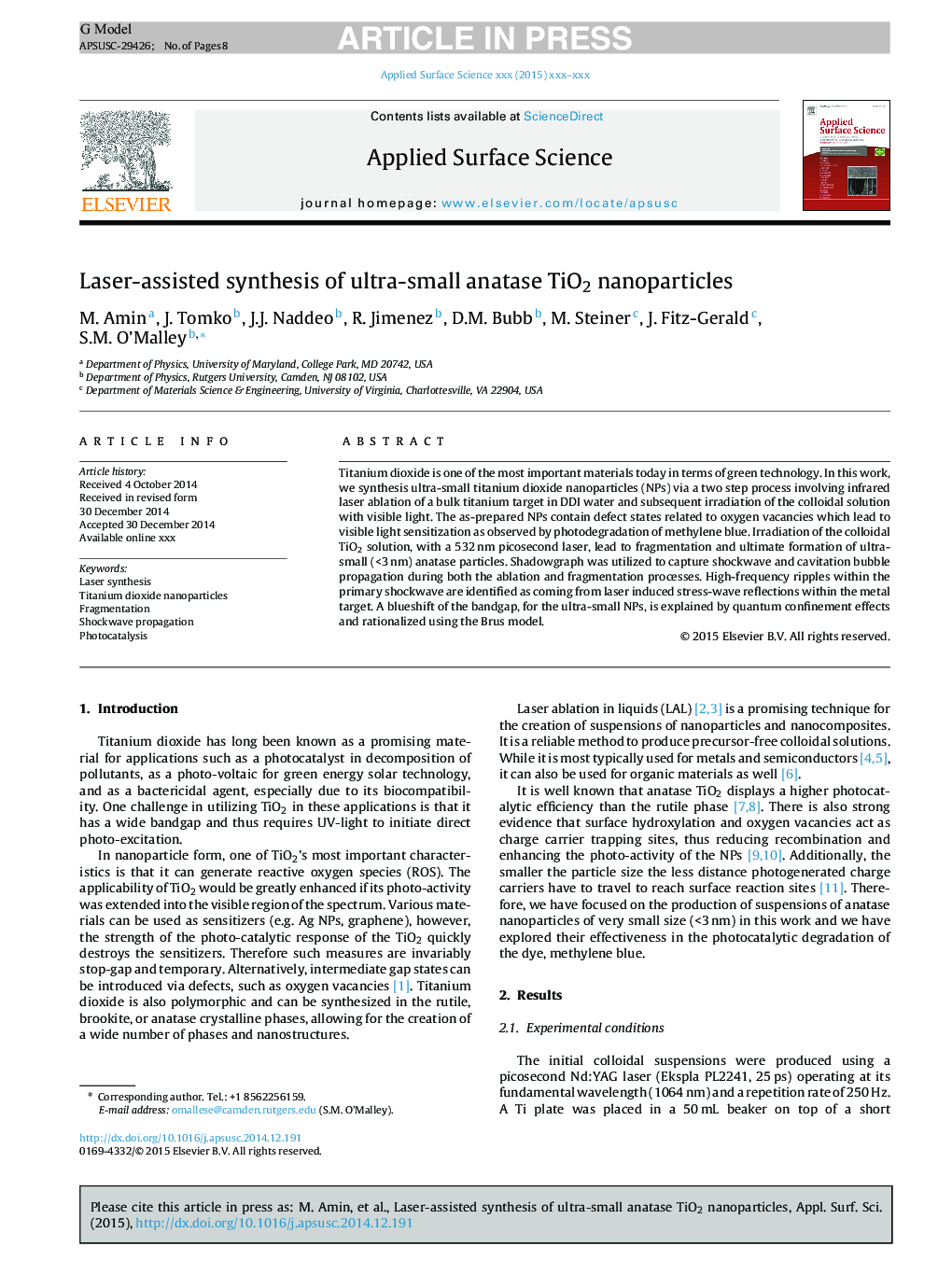| Article ID | Journal | Published Year | Pages | File Type |
|---|---|---|---|---|
| 5357339 | Applied Surface Science | 2015 | 8 Pages |
Abstract
Titanium dioxide is one of the most important materials today in terms of green technology. In this work, we synthesis ultra-small titanium dioxide nanoparticles (NPs) via a two step process involving infrared laser ablation of a bulk titanium target in DDI water and subsequent irradiation of the colloidal solution with visible light. The as-prepared NPs contain defect states related to oxygen vacancies which lead to visible light sensitization as observed by photodegradation of methylene blue. Irradiation of the colloidal TiO2 solution, with a 532Â nm picosecond laser, lead to fragmentation and ultimate formation of ultra-small (<3Â nm) anatase particles. Shadowgraph was utilized to capture shockwave and cavitation bubble propagation during both the ablation and fragmentation processes. High-frequency ripples within the primary shockwave are identified as coming from laser induced stress-wave reflections within the metal target. A blueshift of the bandgap, for the ultra-small NPs, is explained by quantum confinement effects and rationalized using the Brus model.
Related Topics
Physical Sciences and Engineering
Chemistry
Physical and Theoretical Chemistry
Authors
M. Amin, J. Tomko, J.J. Naddeo, R. Jimenez, D.M. Bubb, M. Steiner, J. Fitz-Gerald, S.M. O'Malley,
